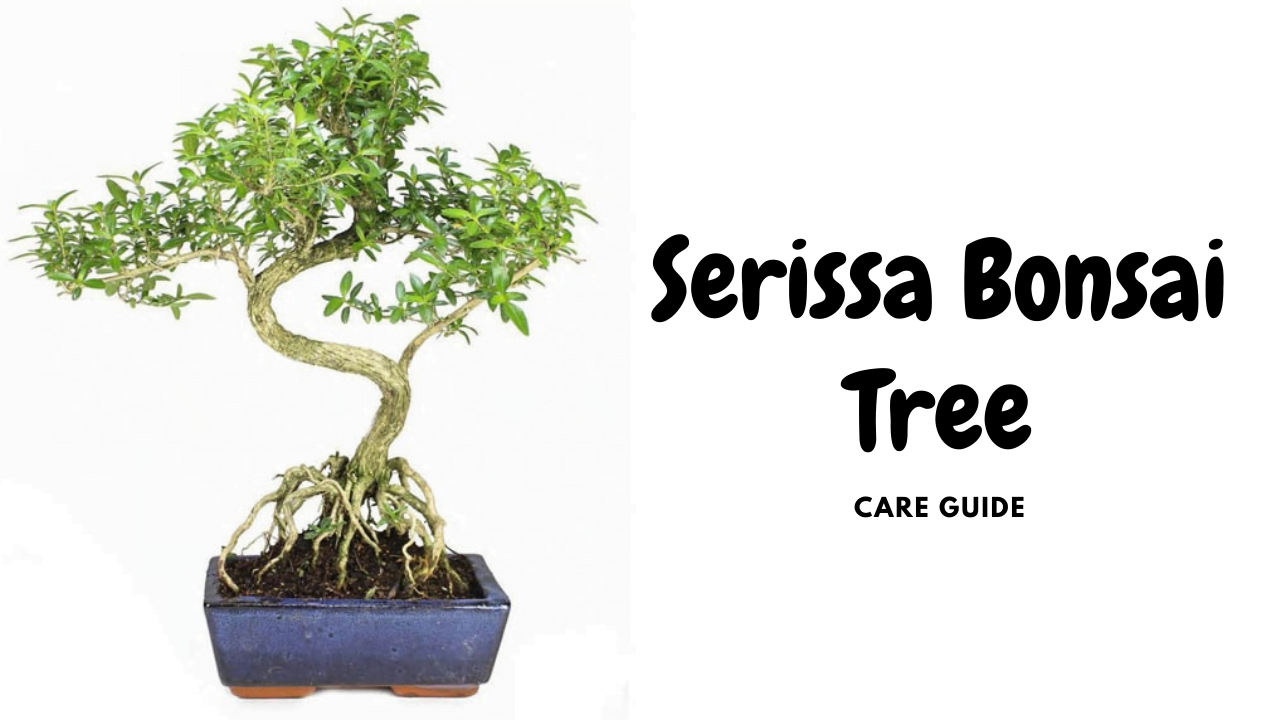Serissa Foetida is a tough guy, and you better know the skills to get the best for them. Serissa bonsai trees are flowering trees grown outdoors. They are famous for their gorgeous white flowers and evergreen leaves.
Caring for Serissa can be challenging! If you are a beginner, you might take time to adapt to this flowering plant. The plant is very sensitive to environmental changes, which massively reflects its growth. You might have an upper side when caring for these bonsai trees if you have hot outdoors.
Basic care requirements would be a hot temperature, adequate water, plenty of fertilizers, and regular pruning and repotting.
Serissa Bonsai Tree Specification
Knowing the plant’s specifications helps us understand the plant’s growing conditions. In addition, the list is briefly about the plant’s basic healthy growth and care requirements.
| Botanical name | Serissa Foetida |
| Common name | snow rose, tree of thousand stars, or Japanese boxthorn |
| Description | Serissa Foetida is an evergreen belonging to the subtropical regions. It grows beautiful white flowers all year long. It has a rough trunk and spiny branches. The foliage grows in a dome-like shape to create a canopy. |
| Height | Up to 4 feet tall |
| Width | 3 – 5 feet |
| Sunlight | 6 – 8 hours of sunlight outdoor for healthy growth |
| Watering | The soil must always be moist. Water regularly so that the root balls are always wet. Never water clog the plant pot. |
| Fertilizing | Use solid organic fertilizer once every 4 weeksUse diluted liquid fertilizers once every week |
| Pruning time | Prune early springtime and again in the fall if needed. Averagely prune every 2- 3 years. |
| Repotting time | Replant every 2 – 3 years. Replace the soil with a soil mixture of Akadama soil and bio gold bonsai fertilizers at an appropriate ratio |
| Life span | More than 20 years |
| Note | Foliage and roots give away unpleasant odours when they are bruised or pruned. They are also sensitive to changes in location. |
Serissa Bonsai Tree Care
Growing and caring for the Serissa bonsai tree is a skilful task. Despite the realistic tree-like appearance, evergreen leaves, and colourful flowers, the plant needs extra focus on maintenance to stay healthy.
As they are environmentally sensitive, these plants are hard to grow indoors. If you plan to grow Serissa bonsai indoors, you might have to check the lighting and temperature constantly. Also, avoid shifting the plant pot often for the same reason.
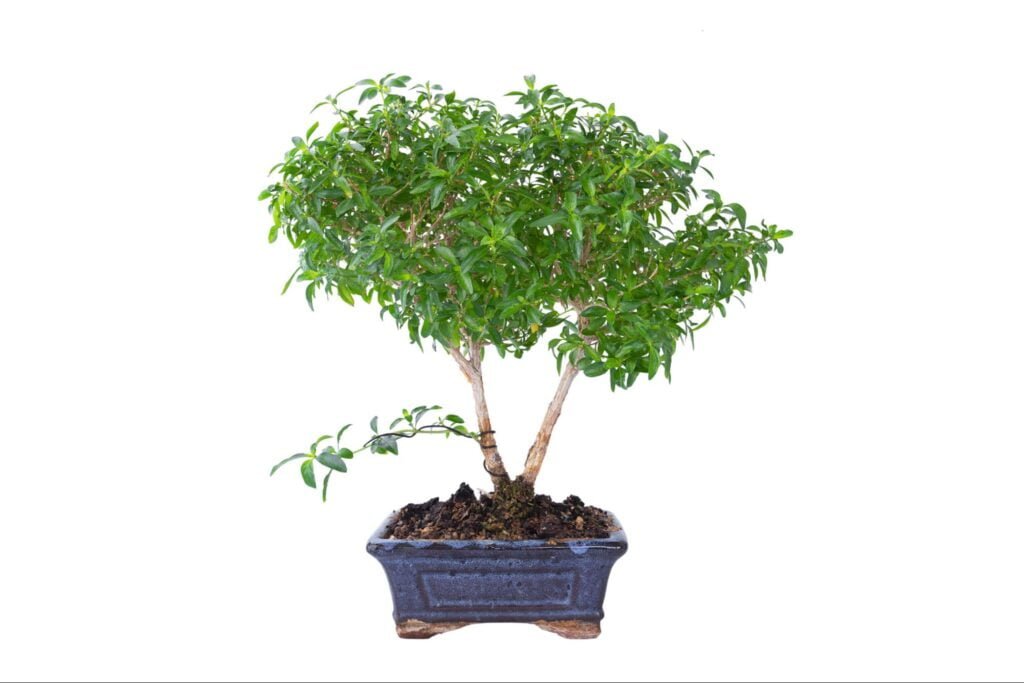
Climatic requirements
Serissa bonsai plants are outdoor friendly plants. They grow the most during and produce flowers almost all year long. However, it will require wind protection and a bright spot.
Being a sub-tropical tree, the plant enjoys sunlight and requires a temperature of more than 10℃ or 50℉. Therefore, when the temperature drops during winter, you can shift them indoors though the check is provided with the warm temperature and lighting.
Try not to change the location of the plant very often. For example, if you move your plant, let them stay in the same place for 4-6 weeks before moving them elsewhere. These plants are very sensitive to a drastic change in location.
You will see a massive increase in flower production when you expose the plant to hotter temperatures.
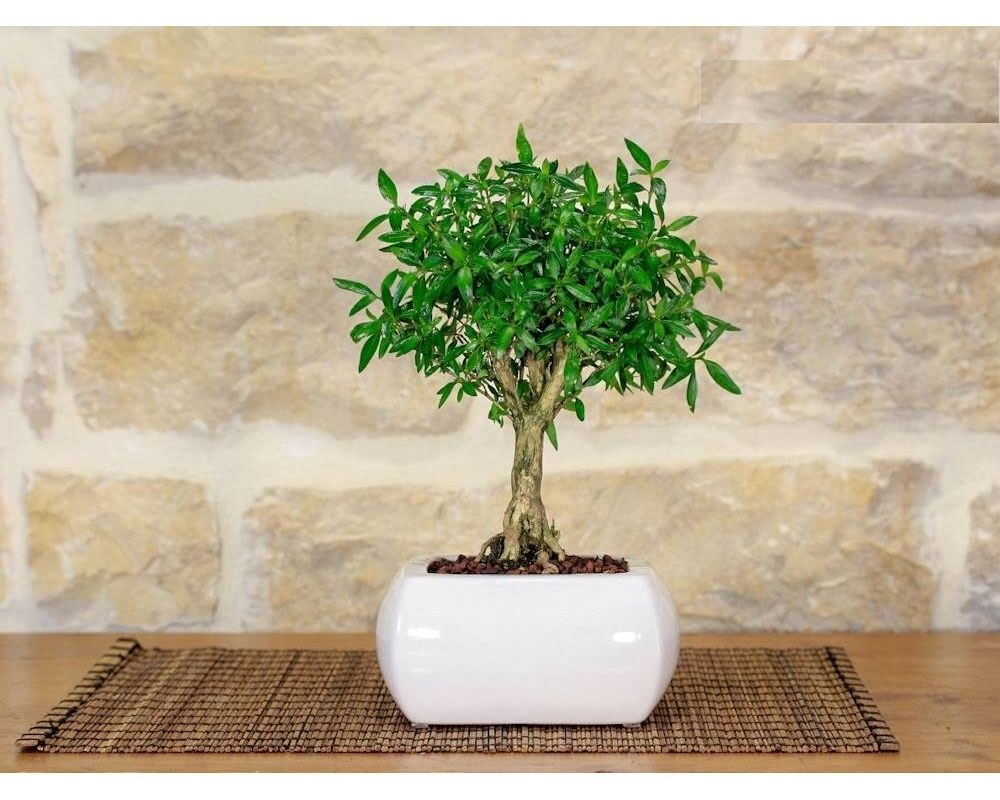
Watering Serissa bonsai
Watering Serissa bonsai is very important, unlike any bonsai plant. You cannot let the soil dry out or overwater the plant. They can easily dry out of the water as they stay in the hot sun. Also, if you don’t check them regularly, they might start shedding their leaves.
Every time you notice Serissa defoliating, it might be a good sign to cut down the water, yet you must take care to maintain the soil moisture.
Sometimes you might try placing a tray of water beneath the plant pot to regulate moisture absorption in the plant. However, things can get risky while growing Serissa as these plants are more prone to root rots.
The plant does not adapt quickly, which makes things hard when you care for Serissa bonsai, making it a difficult choice if you are a beginner.
Fertilizers
As the plant grows, the nutrients in the soil become less effective and depleted. Therefore, we need to add fertilizers to the soil to maintain soil fertility. Properly fed plants can grow fast and robust compared to unfed plants.
Serissa needs to be fed more during the growing season, usually from April to October. Feed monthly with solid organic fertilizers, and during the other seasons, you can reduce the feeding to a monthly once routine. If you use liquid fertilizers, then dilute them to half their strength and use them weekly over the plants.
Choose fertilizers with a balanced N-P-K ratio ( nitrogen, potassium, and phosphorus). You can use solid organic fertilizers like Biogold Bonsai fertilizer and Hanagokoro fertilizers. These are readily available and easy to use. They are also odourless and economical.
Never fertilize Serissa bonsai under two conditions,
- Avoid fertilizing when the plant is not actively growing. The fertilizers are meant to accelerate existing growth and not induce new growth, so don’t feed your plant during winters and after repotting.
- Avoid fertilizing unhealthy or stressed plants. It only adds more stress to the roots and might even kill the plant.
Propagation
The best method to propagate Serissa bonsai trees is through the cutting method. This is because bonsai trees grow faster through cuttings than through seed methods.
You can opt for semi-hardwood cutting to propagate Serissa Foetida. Here a semi-hard stem was chosen- an almost grown, bendable yet breakable stem. You can propagate them by placing 4 inches of the stem in a glass of water to induce faster root growth.
Pruning
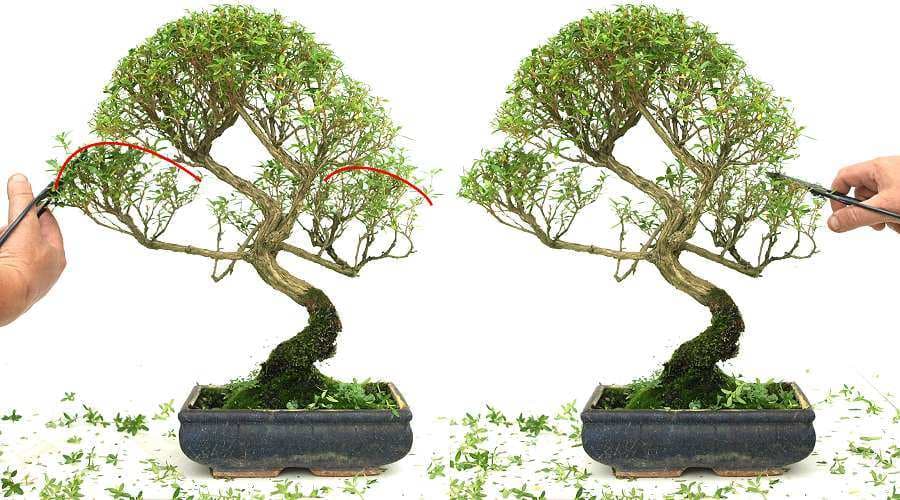
Serissa bonsai trees are fast-growing and may need regular pruning and wiring to stay in shape. Prune the plant once the flowering is done to encourage new growth and flower next season.
Start by removing all wilted and faded flowers. Avoid removing all new growth all at once; start removing half of the new growth and let the remaining growth stay intact on the plants. It grows air roots and can undergo stylings like exposed roots and rock over rock styles.
Care must be taken when you cut the plants. Use sterilized cutting tools to style the plant. The cutting can be minimal by trimming smoothly and concavely; this helps the plants heal quickly. It is necessary to control the wounds as these plants produce unpleasant smells when the wounds get exposed.
Shaping
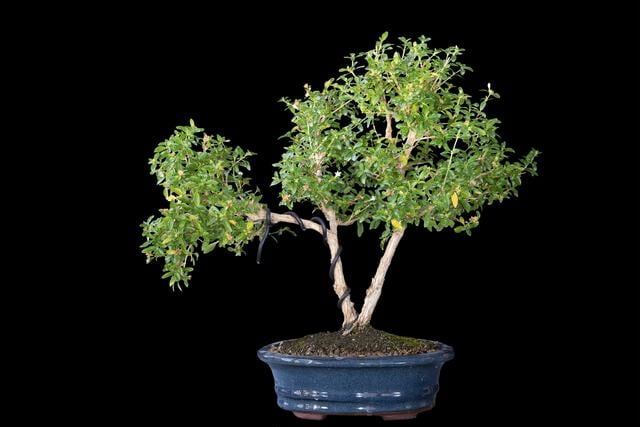
Shape the Serissa bonsai trees during spring and summer, and you can use these growth periods to induce the desired shape. Never wire the bonsai Serissa tree immediately after repotting; doing so will increase the stress over the roots and reduce the growth.
The branches of young bonsai trees are very light and thin, and you must avoid hard wires that might break these stems. Instead, opt for thin Aluminum wires instead of the traditional copper wires if the plant is still young and brittle.
Start wiring by winding the training wires around the branch. Do not tie it too loose so that the wires may loosen. At the same time, overtightening can break the branch. Instead, begin the shaping wires from the base as you move upwards and outwards.
Choose a sturdy yet flexible branch to bend the wires into the desired shape. Leaves the wire intact for around 6 months, after which the plants are capable of following the same shape without wires. Cut the wire once the shaping is done. Never remove or untangle the wire, as this might break the stem.
Repotting
Repotting ensures the plants get fresh and fertile soil as the old soil might be depleted of its nutrients and minerals. Repotting can be done all year long though it is best to do it in early spring once the flowers have bloomed. You must repot young plants every 2- 3 years, and you can transplant older plants a little less, around 5- 6 years.
While repotting Serissa Foetida root pruning is a tricky job. Moderate root pruning is done to avoid wounding the plants. Open wounds are famous for the unpleasant, vomit-like smell they emit. So instead, cut down the dead roots and excessive roots that might damage the plant’s stability and future growth.
Use a nutrient-rich substrate to replant the Serissa bonsai trees. Being a subtropical native plant, you can use any bonsai soil from these regions, like the Akadama bonsai soil, with Biogold bonsai fertilizers to fill the repotting pot. However, you must avoid fertilizing the plant for 3- 4 months after repotting, as they are already nutrient-rich during this period.
Difficulties
We are not trying to frighten you away, but in practice, these Serissa bonsai trees are tough to grow, mainly the part where you CARE for these bonsai trees.
Serissa Foetida is a very fragile plant and needs timely care. It is also very sensitive to environmental changes. For example, they shed leaves when you over-water, underwater, if it’s too hot, too cold or even if you change their locations.
Another difficulty while caring for Serissa bonsai trees is their availability. These plants are mostly imported from Japan and China and are prone to fungal infections. Either they die due to serious fungal infection within a few months or have excessive pesticides used on them and never completely grow after the chemical contact.
A professional and experienced gardener can identify the plant’s needs and respond wisely. However, it might take time to understand the plant, making it a hard choice if you are a beginner.
Conclusion
The bonsai Serissa trees are evergreen and bear shiny green leaves on them. The tree is famous for its flowers and rough tree bark, perfect for decorating your terrace garden. However, they are sensitive and need dutiful maintenance. Caring for a Serissa bonsai tree might not be easy, but they are worth the effort and time.
Related Articles
- Propagating Chinese Elm Bonsai Cuttings And From Seeds
- Best Chinese Elm Bonsai Soil and Fertilizer.
- Troubleshooting Common Problems With Chinese Elm Bonsai
- Buy Chinese Elm Bonsai: How Not to Get Scammed When Purchasing a Chinese Elm Bonsai Tree!
- Chinese Elm Bonsai Pruning And Styling.
- Creating a Chinese Elm Bonsai Forest- Step-By-Step Guide.

